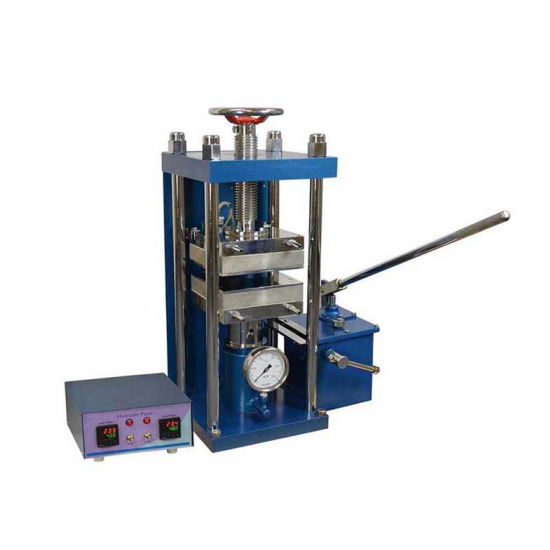Xiamen Tmax Battery Equipments Limited was set up as a manufacturer in 1995, dealing with Laboratory equipments, technology, etc. We have total manufacturing facilities of around 2, 000 square meters and more than 100 staff. Owning a group of experie-nced engineers and staffs, we can bring you not only reliable products and technology, but also excellent services and real value you will expect and enjoy.
A hydraulic heat press, also known as a thermal hydraulic press or hot hydraulic press, is specialized equipment designed to apply both heat and hydraulic pressure for processes that require precise temperature control alongside high-pressure application. This type of press is widely used in industries such as composites manufacturing, rubber processing, plastics molding, wood laminate production, and various research and development applications.
Key Features of a Hydraulic Heat Press
1. Heating System
Heated Platens: The press features heated platens made from materials with excellent thermal conductivity to ensure uniform heating across the entire surface.
Temperature Range: Capable of reaching temperatures from around 30°C up to 450°C or higher, depending on the specific model and its intended use.
Precision Temperature Control: Advanced controllers allow for accurate setting and maintenance of temperatures within tight tolerances, ensuring consistent quality across batches.
2. Hydraulic Pressure Application
High Force Capacity: These presses can generate substantial force, often ranging from several tons to hundreds of tons, suitable for compacting materials under high pressure.
Pressure Regulation: Offers fine control over the applied pressure, allowing operators to adjust settings based on material properties and process requirements.
3. Control Systems
Programmable Logic Controller (PLC) or Human-Machine Interface (HMI): Modern presses come equipped with user-friendly interfaces that enable operators to set and monitor parameters like temperature, pressure, dwell time, and cooling rates.
Recipe Storage: Multiple recipes can be stored for different materials and processes, facilitating quick changeovers between jobs without manual reconfiguration.
4. Safety Features
Emergency Stop Buttons: Immediate shutdown capabilities to enhance operator safety.
Pressure Relief Valves: Protect against overloading by releasing excess pressure, safeguarding both the operator and the equipment.
Interlocks and Guarding: Prevent access to hazardous areas during operation, ensuring safe handling.
5. Versatility
Customizable Tooling: Compatible with various dies, molds, and fixtures, making it adaptable to a wide range of applications and production requirements.
Multi-Stage Processes: Some models support multi-stage operations, such as preheating, pressing, and controlled cooling, all within a single cycle.
6. Data Acquisition and Analysis
Real-Time Monitoring: Sensors provide real-time data on critical parameters like temperature, pressure, and cycle time, allowing for adjustments if necessary.
Quality Assurance: Data logging capabilities enable detailed tracking of each operation, supporting quality control efforts and compliance with industry standards.
Lab Hydraulic Press
Applications
Composite Manufacturing: Used for curing composite materials, including carbon fiber reinforced polymers (CFRP), glass fiber reinforced polymers (GFRP), and other advanced composites.
Rubber Processing: Ideal for vulcanizing rubber products, ensuring they achieve the desired mechanical properties.
Plastics Molding: Suitable for compression molding of thermoplastics and thermosetting plastics, including intricate parts and components.
Wood Lamination: Utilized in producing laminated wood products, such as plywood and veneer panels, where heat and pressure are required to bond layers together.
Research and Development: Provides a controlled environment for developing new materials and testing their properties under specific conditions of temperature and pressure.
Choosing the Right Hydraulic Heat Press
When selecting a hydraulic heat press, consider factors such as the required temperature and pressure ranges, the types of materials you will be working with, the precision needed for your experiments or production processes, available space in your facility, and any specific features relevant to your intended use (e.g., heated platens, programmable controls). Investing in a hydraulic heat press tailored to your needs can greatly enhance operational efficiency, product quality, and overall competitiveness in your market. Whether you're focusing on industrial production or laboratory research, the right hydraulic heat press can significantly improve your outcomes.


